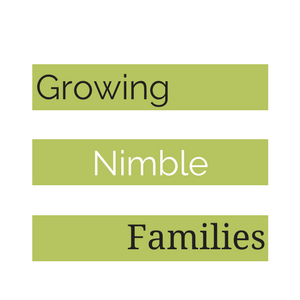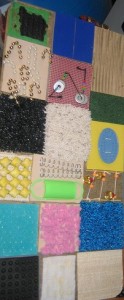Today, I’m excited that we are starting a series of articles written by the talented Elaine from littlesheeplearning.co.uk. Elaine also writes a blog that has news from Littlesheep Learning and the wider world of education and learning. She’s also featured in the free play-activities.com daily play activity emails
Sensory play is a lot of fun and I hope you enjoy trying some of these activities with your little ones and are inspired to find out more.
___________________________________
[tag]Sensory play[/tag] an introduction
Future: Sensory play 6 Touch
Sensory Play Part 1 Introduction: What is Sensory Play?
Sensory play is currently seen as one of the key areas of play for babies and young children and a crucial part of their development. Sensory play is play that involves the use of one or more of the five senses, touch, sight, smell, taste and hearing.
Our senses are our guide through the world around us and for babies and young children they provide endless opportunity for fascinating discovery. Simply gazing at a colourful toy, hearing a bird sing, smelling a flower, tasting a juicy orange or touching a furry soft toy are all opportunities for sensory learning about the world. Young children learn best when they can experience new things with all of their senses; they need to see, hear, feel, touch, smell, and sometimes even taste a learning material in order to really understand it fully. As parents and educators, it is our responsibility to provide sensory opportunities to aid our children’s learning.
The use of sensory materials provides opportunities for self-directed and guided play to encourage a variety of different skills to develop. Through the manipulation of materials – pouring, moulding, lifting, carrying and sorting children will improve their fine and gross motor skills. Child led play with novel materials will help the development of creative skills. Self-confidence will increase as children master what they are trying to achieve and they will develop socially as they learn to share materials and increase their vocabulary. Children will develop their cognitive skills through sensory play by observation, experimentation, the formulation of solutions to problems and manipulation of the sensory materials. Sensory play also gives the opportunity for learning colours, counting, sequencing, sorting, constructing and much more besides.
Recently, sensory play has become synonymous with messy play. This series of articles aims to give a variety of activities to help sensory play be about exploring using the senses rather than making a mess. There will be five more articles with activity ideas for sight, smell, sound, taste and touch.
To challenge your senses until the next article here are a few activities – one for each of the five senses to keep you busy:
- Sight pull faces in a mirror
- Smell sniff some smelly soaps
- Sound “play with musical instruments
- Taste bake some yummy biscuits
- Touch“ share a touchy feely book
Sensory play does not have rules to follow and the possibilities are endless – get your little one’s eyes, noses, ears, tongues and fingers busily involved in playtime and discover a learning experience that is fun for everyone!
Elaine Lambe
Educational consultant
Elaine trained as an Occupational Therapist before working with children with autism on home based early intervention programmes. Through her work in the home she helped parents to support their child’s learning, implemented behaviour plans and assisted with teaching self help skills for example toilet training, self-feeding and dressing. She has also had experience of supporting children with special educational needs in mainstream schools, adapting the curriculum to make it accessible to them. After the birth of her first child, Elaine started Littlesheep Learning – www.littlesheep-learning.co.uk – an online store with an ever-growing range of teaching and learning materials for everyone who wants to help their children reach their potential.
**What sensory play ideas do you do already? Share them with us. Write a comment **












[…] presents Sensory Play – Part 1 – Introduction: What is Sensory Play? posted at […]